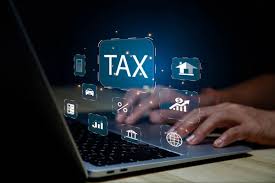Unlocking the Potential of Income Tax Software: Simplifying Tax Compliance

In the realm of personal and business finance, the annual ritual of filing income tax returns can be a daunting task. However, with the advent of income tax software, taxpayers now have access to powerful tools that streamline the tax filing process, simplify compliance, and minimize errors. In this comprehensive exploration, we delve into the world of income tax software, examining its features, benefits, and impact on individuals and businesses alike.
Income tax software refers to computer programs and online platforms designed to assist taxpayers in preparing and filing their income tax returns. These software solutions come equipped with a range of features and functionalities, including:
Data Import: Income tax software allows users to import financial data from various sources, such as payroll systems, financial institutions, and accounting software. This streamlines the data entry process and reduces the risk of manual errors.
Tax Forms and Schedules: Income tax software provides access to a comprehensive library of tax forms and schedules, including W-2s, 1099s, Schedule C, and more. Users can easily navigate through these forms, fill in the required information, and generate accurate tax returns.
Calculations and Deductions: Income tax software automatically performs calculations for taxable income, deductions, credits, and tax liabilities based on the information provided by the user. This ensures accuracy and helps taxpayers maximize their refunds or minimize their tax liabilities.
E-Filing: Income tax software enables users to electronically file their tax returns with the relevant tax authorities, such as the Internal Revenue Service (IRS) in the United States. E-filing is faster, more secure, and often results in quicker processing and refunds compared to traditional paper filing.
Audit Support: Many income tax software solutions offer audit support and assistance in the event of an IRS audit or inquiry. This may include access to tax experts, guidance on responding to audit notices, and assistance in preparing relevant documentation.
Integration with Accounting Software: Some income tax software solutions integrate seamlessly with accounting software platforms, allowing for the automatic transfer of financial data and streamlining the tax preparation process for businesses.
Benefits of Income Tax Software
Income tax software offers numerous benefits for individuals and businesses alike:
Time Savings: Income tax software automates many aspects of the tax preparation process, saving taxpayers valuable time and effort. With features such as data import, calculations, and e-filing, taxpayers can complete their tax returns quickly and efficiently.
Accuracy: Income tax software reduces the risk of errors associated with manual data entry and calculations. The software performs calculations automatically and prompts users to provide missing or inconsistent information, ensuring accurate tax returns.
Cost Savings: Using income tax software can be more cost-effective than hiring a professional tax preparer. Many software solutions offer affordable pricing plans, and some are even available for free for individuals with simple tax situations.
Convenience: Income tax software allows taxpayers to prepare and file their tax returns from the comfort of their own homes, at any time of day or night. This convenience eliminates the need to schedule appointments with tax preparers or visit tax offices in person.
Security: Income tax software employs robust security measures to protect users&8217; sensitive financial information. This includes encryption, multi-factor authentication, and secure data storage practices to safeguard against cyber threats and identity theft.
Best Practices for Using Income Tax Software
To make the most of income tax software, taxpayers should follow these best practices:
Gather Documents: Collect all relevant financial documents, including W-2s, 1099s, receipts, and statements, before starting the tax preparation process.
Review Data: Double-check all imported data and manually entered information for accuracy and completeness. Ensure that all income, deductions, and credits are accounted for correctly.
Maximize Deductions: Take advantage of all available deductions and credits to minimize your tax liability or maximize your refund. Income tax software often includes tools and guidance to help users identify eligible deductions and credits.
Keep Records: Retain copies of your tax returns and supporting documentation for future reference. This includes receipts, statements, and other records used to prepare your tax return.
Stay Informed: Keep abreast of changes to tax laws, regulations, and filing requirements that may impact your tax situation. Income tax software providers often provide updates and resources to help users stay informed.
Conclusion
In conclusion, income tax software has revolutionized the way individuals and businesses prepare and file their tax returns. With its user-friendly interfaces, powerful features, and time-saving capabilities, income tax software makes tax compliance more accessible, accurate, and efficient than ever before. By following best practices and leveraging the benefits of income tax software, taxpayers can navigate the complexities of the tax code with confidence and ease, ensuring compliance and maximizing their tax benefits.
